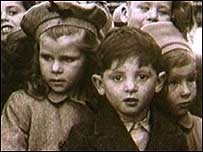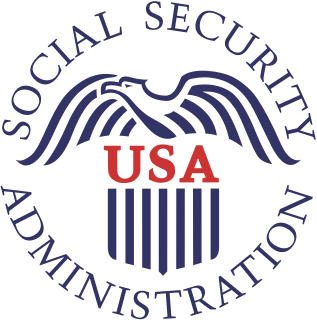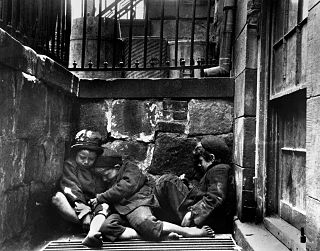Related Research Articles

Foster care is a system in which a minor has been placed into a ward, group home, or private home of a state-certified caregiver, referred to as a "foster parent" or with a family member approved by the state. The placement of the child is normally arranged through the government or a social service agency. The institution, group home or foster parent is compensated for expenses unless with a family member.
The Administration for Children and Families (ACF) is a division of the United States Department of Health and Human Services (HHS). It is headed by the Commissioner and Deputy Commissioner. It has a $49 billion budget for 60 programs that target children, youth and families. These programs include assistance with welfare, child support enforcement, adoption assistance, foster care, child care, and child abuse.
The United States Children's Bureau is a federal agency organized under the United States Department of Health and Human Services' Administration for Children and Families. Today, the bureau's operations involve improving child abuse prevention, foster care, and adoption. Historically, its work was much broader, as shown by the 1912 act which created and funded it:
The said bureau shall investigate and report to [the Department of Commerce and Labor] upon all matters pertaining to the welfare of children and child life among all classes of our people, and shall especially investigate the questions of infant mortality, the birth-rate, orphanage, juvenile courts, desertion, dangerous occupations, accidents and diseases of children, employment, legislation affecting children in the several states and territories.

Temporary Assistance for Needy Families is a federal assistance program of the United States. It began on July 1, 1997, and succeeded the Aid to Families with Dependent Children (AFDC) program, providing cash assistance to indigent American families through the United States Department of Health and Human Services. TANF is often simply referred to simply as welfare.
Foster children in Canada are known as permanent wards,. A ward is someone, in this case a child, placed under protection of a legal guardian and are the legal responsibility of the government. Census data from 2011 counted children in foster care for the first time, counting 47,885 children in care. The majority of foster children – 29,590, or about 62% – were aged 14 and under. The wards remain under the care of the government until they "age out of care." This age is different depending on the province.

The Personal Responsibility and Work Opportunity Reconciliation Act of 1996 (PRWORA) is a United States federal law passed by the 104th United States Congress and signed into law by President Bill Clinton. The bill implemented major changes to U.S. social welfare policy, replacing the Aid to Families with Dependent Children (AFDC) program with the Temporary Assistance for Needy Families (TANF) program.
Kinship care is a term used in the United States and Great Britain for the raising of children by grandparents, other extended family members, and adults with whom they have a close family-like relationship such as godparents and close family friends because biological parents are unable to do so for whatever reason. Legal custody of a child may or may not be involved, and the child may be related by blood, marriage, or adoption. This arrangement is also known as "kincare" or "relative care." Kinship placement may reduce the number of home placements children experience; allow children to maintain connections to communities, schools, and family members; and increase the likelihood of eventual reunification with birth parents. It is less costly to taxpayers than formal foster care and keeps many children out of the foster care system. "Grandfamily" is a recently coined term in the United States that refers to families engaged in kinship care.

The Adoption and Safe Families Act was signed into law by President Bill Clinton on November 19, 1997, after having been approved by the United States Congress earlier in the month.
Child Protective Services (CPS) is the name of a government agency in many states of the United States responsible for providing child protection, which includes responding to reports of child abuse or neglect. Some states use other names, often attempting to reflect more family-centered practices, such as Department of Children & Family Services (DCFS). CPS is also known by the name of Department of Social Services (DSS) or simply Social Services.
Transitional age youth (TAY) are young people between the ages of sixteen and twenty-four who are in transition from state custody or foster care and are at-risk. Once they turn 18 they can no longer receive assistance from the systems of care that previously provided for many of their needs. Like most young people, they are struggling to start out with limited resources and experience. Unlike many, though, they do not have the family resources others take for granted. There is no family to provide them with furniture and dishes for their apartment, to co-sign a loan or guarantee their credit for the landlord, to help pay the security deposit, to guide them through the college admissions process, or put in a good word for a new job.

The Indian Child Welfare Act of 1978 (ICWA) is a Federal law that governs jurisdiction over the removal of Native American (Indian) children from their families in custody, foster care and adoption cases.
Family preservation was the movement to help keep children at home with their families rather than in foster homes or institutions. This movement was a reaction to the earlier policy of family breakup, which pulled children out of unfit homes. Extreme poverty alone was seen as a justified reason to remove children. This new movement began in the 1890s, and in the 1909 White House Conference on Children it was the top ranked issue. In order to keep families together, the family would be given enough money so that the mother would not have to work a full-time job. The families that were given this assistance were usually headed by widows.
Child and family services is a government and/or non-profit organisation designed to better the well being of individuals who come from unfortunate situations, environmental or biological. People who seek or are sought after to participate in these homes have no other resource to turn to. Children might come from abusive or neglectful homes, or live in very poor and dangerous communities. There are also agencies that cater to people who have biological deficiencies. Families that are trying to live in stable lives come to non-profit organisations for hope of a better future. Child and family services cater to many different types of people who are all in different situations. These services might be mandated through the courts via a governmental child protection agency or they might be voluntary. Child and family services may be mandated if:
- There is domestic violence in the home
- There is abuse or neglect in the home
- Constant negativity amongst family members which could lead to violent behavior
- Physical abuse
- Emotional abuse
- Sexual abuse

The Foster Care Independence Act of 1999 aims to assist youth aging out of foster care in the United States in obtaining and maintaining independent living skills. Youth aging out of foster care, or transitioning out of the formal foster care system, are one of the most vulnerable and disadvantaged populations. As youth age out of the foster care system at age 18, they are expected to become self-sufficient immediately, even though on average youth in the United States are not expected to reach self-sufficiency until age 26.

Social programs in the United States are welfare programs designed to ensure that the basic needs of the American population are met. Federal and state welfare programs include cash assistance, healthcare and medical provisions, food assistance, housing subsidies, energy and utilities subsidies, education and childcare assistance, and subsidies and assistance for other basic services. Similar social welfare benefits are sometimes provided by the private sector either through policy mandates or on a voluntary basis. Employer-sponsored health insurance is an example of this.

Foster care is the term used for a system in which a minor who has been made a ward is placed in an institution, group home, or private home of a state certified caregiver. The placement of the child is usually arranged through the government or a social-service agency. The institution, group home or foster parent is provided compensation for expenses.

The Preventing Sex Trafficking and Strengthening Families Act is a US bill that would address federal adoption incentives and would amend the Social Security Act (SSA) to require the state plan for foster care and adoption assistance to demonstrate that the state agency has developed policies and procedures with respect to the children it is working, and which are (possibly) a victim of sex trafficking or a severe form of trafficking in persons. The bill furthermore requires states to implement the 2008 UIFSA version, which is required so the 2007 Hague Maintenance Convention can be ratified by the US.
The New York City Administration for Children's Services (ACS) is a governmental agency that protects and promotes safety and well-being of New York City's children and families by providing child welfare, juvenile justice, and early care and education services.

The Adoption Assistance and Child Welfare Act of 1980 (AACWA) was enacted by the US Government on June 17, 1980. Its purpose is to establish a program of adoption assistance; strengthen the program of foster care assistance for needy and dependent children; and improve the child welfare, social services, and aid to families with dependent children programs. This act amended titles IV-B and XX of the Social Security Act.
Under normal circumstances, the United States child welfare systems is considered by experts to be underfunded and strains social workers with high case loads. However, during the 2020 COVID-19 pandemic, the U.S. experienced an unprecedented lockdown and national unemployment reached a record high. This presents an issue because it is recorded that during times of economic stress, child abuse skyrockets.
References
- ↑ "H.R. 6893 [110th]: Fostering Connections to Success and Increasing Adoptions Act of 2008". GovTrack.us. Retrieved 2011-08-10.
- ↑ Archived October 8, 2010, at the Wayback Machine
- ↑ "Fostering Connections to Success and Increasing Adoptions Act". Childrensdefense.org. 2008-10-07. Retrieved 2011-08-10.
- ↑ Lester, Patrick, Winder, Varina, Fostering Connections to Success and Increasing Adoptions Act of 2008, Allience1.org. Retrieved August 2011
- ↑ Fostering Connections Act...Summary, Center for Law and Social Policy. Retrieved August 2011
- ↑ Congressional Budget Office...Cost estimate, cbo.org. Retrieved August 2011
- 1 2 3 4 "California's Fostering Connections: Ensuring that the AB12 Bridge Leads to Success for Transition Age Foster Youth" (PDF). Children's Advocacy Institute , University of San Diego School of Law. December 2013. Retrieved November 13, 2016.
- 1 2 Cal. Welf. & Inst. Code §11403(b)
- ↑ "Guide to the Insterstate Compact on the Placement of Children" (PDF). American Public Human Services Association. 2002. Retrieved November 13, 2016.
- ↑ "Caseloads". AFSCME. Retrieved 2016-11-13.
- ↑ Alliance for Children and Families
- ↑ American Public Human Services Association
- ↑ Fostering Connections Resource Center